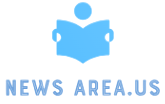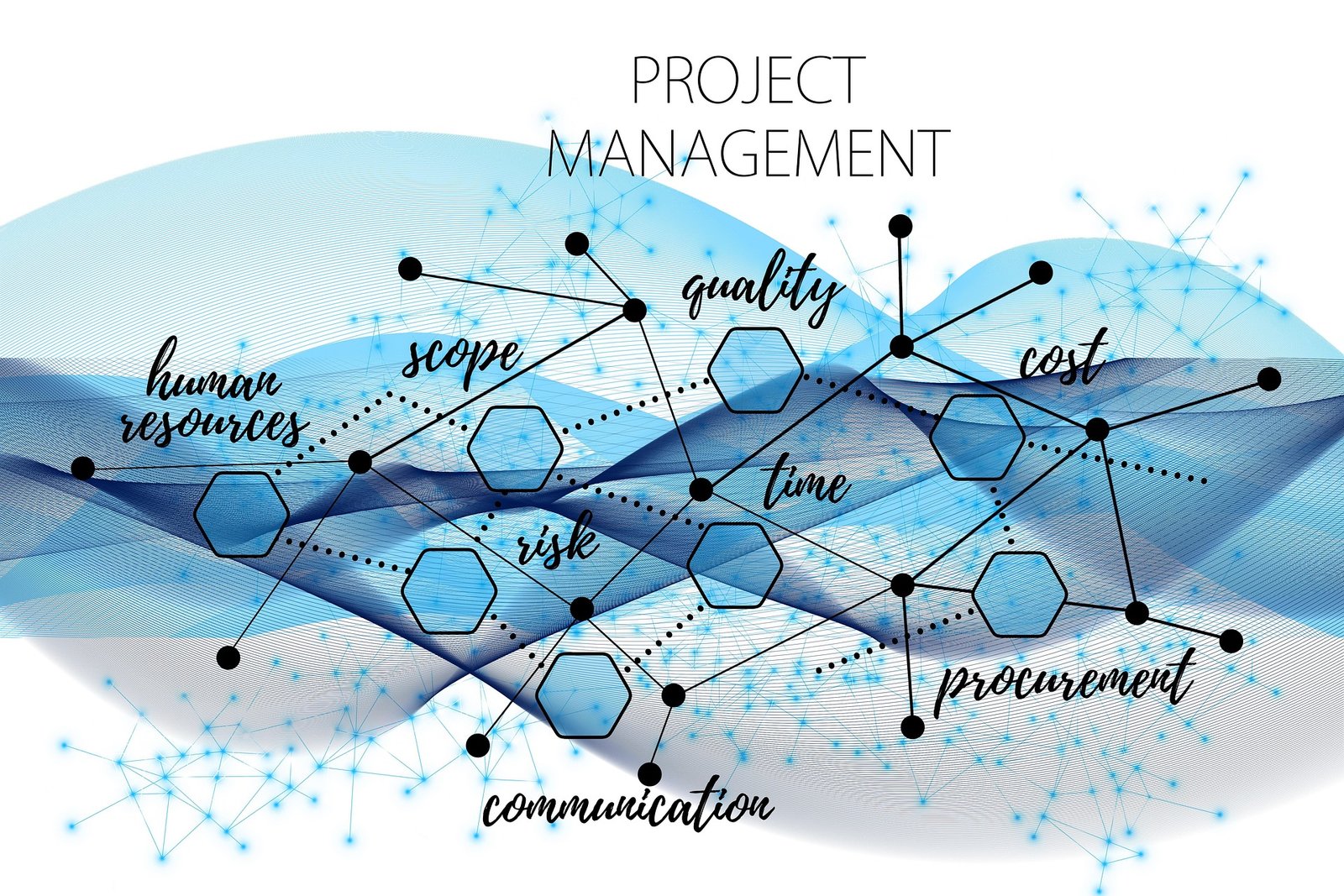Human Resource Management 2025: Functions, Strategies, and Future Trends – A Complete Course from Beginner to Advanced Level
The modern workplace is evolving at an unprecedented pace, and at the heart of this transformation lies Human Resource Management. Whether you’re a business owner, an aspiring HR professional, or someone looking to understand how organizations manage their most valuable asset—people—this comprehensive guide will take you from foundational concepts to advanced strategies that are shaping the future of work.
Understanding Human Resource Management: The Foundation
Human Resource Management (HRM) is far more than just hiring and firing employees. It’s the strategic approach to nurturing the most valuable assets of an organization—the people who collectively contribute to achieving business objectives. Through my years of working with diverse organizations, I’ve witnessed firsthand how effective Human Resource Management can transform struggling companies into thriving, people-centered enterprises.
At its core, HRM encompasses all activities related to managing an organization’s workforce. This includes recruiting talented individuals, developing their skills, maintaining their motivation, ensuring fair compensation, and creating a workplace culture where everyone can thrive. The discipline has evolved significantly from its administrative roots into a strategic business function that directly impacts organizational success.
Why Human Resource Management Matters More Than Ever
In today’s competitive business landscape, organizations recognize that technology and capital can be replicated, but a skilled, motivated, and aligned workforce cannot. This realization has elevated Human Resource Management from a support function to a strategic partner in driving business growth. Companies with strong HR practices consistently outperform their competitors in profitability, innovation, and employee satisfaction.
The Core Functions of Human Resource Management
Let me walk you through the essential functions that form the backbone of effective Human Resource Management. Understanding these functions is crucial whether you’re just starting your HR journey or looking to refine your existing knowledge.
1. Workforce Planning and Recruitment
Strategic Workforce Planning
Before recruiting anyone, successful organizations analyze their current and future talent needs. This involves:
- Assessing the current workforce capabilities and identifying gaps
- Forecasting future business needs and corresponding talent requirements
- Developing strategies to bridge the gap between current state and future needs
- Creating succession plans for critical positions
- Building talent pipelines for anticipated openings
The Recruitment Process
Recruitment has transformed dramatically in recent years. Gone are the days of posting a job ad in the newspaper and waiting for resumes. Modern recruitment involves:
- Crafting compelling employer brand narratives that attract top talent
- Utilizing multiple channels including job boards, social media, employee referrals, and professional networks
- Implementing applicant tracking systems to manage candidate flow efficiently
- Creating candidate experiences that reflect organizational values
- Building diverse candidate pools that bring varied perspectives
Selection and Onboarding
The selection process extends beyond interviews. It includes:
- Structured interviews that assess both technical skills and cultural fit
- Assessment tools and tests that predict job performance
- Background checks and reference verifications
- Making competitive offers that attract desired candidates
- Comprehensive onboarding programs that accelerate new hire productivity
2. Training and Development
Organizations that invest in employee development see remarkable returns. Human Resource Management plays a pivotal role in building organizational capability through:
Training Programs
- Technical Skills Training: Job-specific knowledge and competencies
- Soft Skills Development: Communication, leadership, teamwork, and emotional intelligence
- Compliance Training: Regulatory requirements and organizational policies
- Safety Training: Workplace safety and emergency procedures
- Digital Literacy: Technology skills essential for modern work
Career Development Initiatives
- Mentorship programs connecting experienced employees with those seeking guidance
- Leadership development tracks prepare future organizational leaders
- Cross-functional rotations expose employees to different business areas
- Tuition reimbursement programs supporting continued education
- Professional certification sponsorship demonstrates investment in employee growth
3. Performance Management
Modern performance management has shifted from annual reviews to continuous feedback systems. Effective Human Resource Management implements:
Goal Setting and Alignment
- Cascading organizational objectives to individual goals
- Using frameworks like OKRs (Objectives and Key Results) or SMART goals
- Ensuring employees understand how their work contributes to company success
- Regular check-ins to adjust goals based on changing business needs
Continuous Feedback Culture
- Ongoing conversations between managers and employees
- Real-time recognition of achievements and contributions
- Constructive feedback that enables growth and improvement
- Peer feedback systems that provide 360-degree perspectives
- Technology platforms that facilitate regular feedback exchanges
Performance Reviews and Evaluations
- Fair and consistent evaluation criteria
- Documentation of achievements and areas for development
- Performance improvement plans for struggling employees
- Recognition and rewards for high performers
- Career conversations linking performance to advancement opportunities
4. Compensation and Benefits Management
Fair and competitive compensation is fundamental to attracting and retaining talent. Human Resource Management oversees:
Compensation Strategy
| Component | Description | Purpose |
|---|---|---|
| Base Salary | Fixed regular payment | Reflects job value and market rates |
| Variable Pay | Bonuses, commissions, incentives | Rewards performance and results |
| Equity Compensation | Stock options, RSUs | Aligns employee interests with company success |
| Pay for Performance | Merit increases tied to results | Motivates high performance |
Benefits Administration
Comprehensive benefits packages include:
- Health insurance (medical, dental, vision)
- Retirement plans (401k, pension programs)
- Paid time off (vacation, sick leave, holidays)
- Life and disability insurance
- Wellness programs promoting physical and mental health
- Flexible work arrangements supporting work-life balance
- Professional development opportunities
- Employee assistance programs provide confidential support
5. Employee Relations and Engagement
Creating a positive workplace where employees feel valued and engaged requires deliberate effort:
Building Strong Relationships
- Open communication channels where employees feel heard
- Regular pulse surveys measuring engagement and satisfaction
- Town hall meetings fostering transparency and connection
- Employee resource groups supporting diverse communities
- Conflict resolution mechanisms addressing workplace issues fairly
Engagement Strategies
- Recognition programs celebrating contributions and achievements
- Team-building activities strengthen relationships
- Volunteer opportunities connecting work to community impact
- Social events create informal connection opportunities
- Career growth pathways demonstrating commitment to employee futures
6. Compliance and Legal Matters
Human Resource Management ensures organizations operate within legal and regulatory frameworks:
- Employment law compliance (hiring, termination, discrimination)
- Wage and hour regulations (overtime, minimum wage, classification)
- Workplace safety standards (OSHA compliance, safety protocols)
- Privacy regulations (employee data protection)
- Labor relations (union negotiations, collective bargaining)
- Immigration compliance (work authorization verification)
- Accommodation requirements (ADA compliance, religious accommodations)
Strategic Human Resource Management: Advanced Concepts
As you progress in your HR journey, understanding strategic HRM becomes essential. This involves aligning HR practices with organizational strategy to create competitive advantage.
HR Analytics and Data-Driven Decision Making
Modern Human Resource Management leverages data to make informed decisions:
Key HR Metrics to Track
- Time to Fill: Average days to fill open positions
- Cost per Hire: Total recruitment expenses divided by the number of hires
- Turnover Rate: Percentage of employees leaving within a specific period
- Employee Retention Rate: Percentage of employees staying over time
- Engagement Scores: Employee satisfaction and commitment levels
- Training ROI: Return on investment for development programs
- Absenteeism Rate: Frequency of unplanned absences
- Performance Distribution: Spread of performance ratings across the workforce
Using Analytics for Strategic Decisions
- Predictive analytics forecasting turnover risks
- Workforce analytics identifying skill gaps and talent needs
- Compensation analytics ensuring pay equity and competitiveness
- Diversity analytics monitoring, representation, and inclusion progress
- Performance analytics identifying high-potential employees
Talent Management and Succession Planning
Strategic organizations develop internal talent rather than constantly hiring externally:
Identifying High Potentials
- Assessment centers evaluating leadership capabilities
- Performance track records demonstrating consistent excellence
- Learning agility, showing adaptability, and a growth mindset
- Cultural alignment exhibiting organizational values
- Career aspirations matching organizational needs
Succession Planning Framework
- Identify critical positions essential to business continuity
- Assess current employees for promotion readiness
- Create development plans addressing capability gaps
- Provide stretch assignments, building necessary experience
- Monitor progress and adjust plans as needed
- Ensure backup candidates for key roles
- Review and update succession plans regularly
Organizational Culture and Change Management
Culture shapes how work gets done and how employees experience the workplace:
Building Strong Organizational Culture
- Clearly defined values guiding decisions and behaviors
- Leadership modeling desired cultural attributes
- Recognition systems reinforcing cultural expectations
- Communication practices reflecting cultural values
- Hiring processes selecting for cultural alignment
- Stories and rituals celebrating cultural elements
Leading Through Change
Human Resource Management plays a crucial role in organizational change:
- Communicating the rationale and vision for change
- Engaging employees in the change process
- Providing training for new systems or processes
- Supporting managers as change leaders
- Addressing resistance with empathy and transparency
- Celebrating quick wins, building change momentum
Emerging Trends Shaping Human Resource Management
The HR landscape is evolving rapidly. Understanding these trends positions you at the forefront of the profession:
1. Digital Transformation in HR
Technology is revolutionizing how Human Resource Management operates:
HR Technology Solutions
- Applicant Tracking Systems: Streamlining recruitment and candidate management
- Human Resource Information Systems (HRIS): Centralizing employee data and processes
- Learning Management Systems: Delivering training and tracking development
- Performance Management Platforms: Facilitating continuous feedback and goal tracking
- Employee Engagement Tools: Measuring and improving workplace experience
- AI-Powered Chatbots: Answering employee questions instantly
- Workforce Analytics Platforms: Providing insights for strategic decisions
Benefits of HR Technology
- Increased efficiency through automation of administrative tasks
- Enhanced employee experience with self-service capabilities
- Better decision-making through data and analytics
- Improved compliance with automated tracking and alerts
- Greater accessibility enabling remote workforce management
2. Remote and Hybrid Work Models
The pandemic accelerated remote work adoption, creating permanent changes in how we work:
Managing Distributed Teams
- Establishing clear remote work policies and expectations
- Providing technology and equipment for home offices
- Creating virtual connection opportunities, maintaining team cohesion
- Adapting performance management for remote contexts
- Ensuring equitable treatment of remote and in-office employees
- Supporting manager development for leading distributed teams
Hybrid Workplace Strategies
- Flexible schedules allowing employee choice
- Hot-desking and hoteling systems optimize office space
- Technology infrastructure supporting seamless collaboration
- In-person collaboration days maximize face-to-face time value
- Clear communication about office presence expectations
3. Diversity, Equity, Inclusion, and Belonging (DEIB)
Progressive organizations recognize that diverse teams outperform homogeneous ones:
Building Inclusive Workplaces
- Diverse hiring practices expand talent pools
- Bias training raises awareness of unconscious prejudices
- Employee resource groups provide community and support
- Inclusive leadership development, building cultural competence
- Pay equity audits ensure fair compensation
- Supplier diversity extending inclusion beyond the workforce
- Accessibility initiatives removing barriers for people with disabilities
Measuring DEIB Progress
- Representation metrics across organizational levels
- Inclusion survey scores measuring belonging
- Promotion and advancement rates by demographic group
- Pay equity analyses identifying compensation disparities
- Retention rates show who stays and who leaves
4. Employee Wellbeing and Mental Health
Human Resource Management increasingly focuses on holistic employee wellbeing:
Comprehensive Wellbeing Programs
- Mental health support, including counseling services and resources
- Physical wellness initiatives promoting healthy lifestyles
- Financial wellness education helps employees achieve financial security
- Stress management training building resilience
- Flexible work arrangements supporting work-life integration
- Generous time-off policies enabling rest and recovery
- Destigmatizing mental health through open conversations
5. Artificial Intelligence and Automation
AI is transforming Human Resource Management in profound ways:
AI Applications in HR
- Resume screening identifies qualified candidates faster
- Chatbots answering routine employee questions
- Predictive analytics forecasting turnover and performance
- Personalized learning recommendations tailoring development
- Sentiment analysis understanding employee feedback themes
- Scheduling automation, coordinating interviews,s and meetings
Balancing Technology and Human Touch
While technology enhances efficiency, Human Resource Management must maintain the human element that makes the profession valuable. The art lies in knowing when technology enhances the employee experience and when human interaction is essential.
6. Skills-Based Workforce Planning
Rather than focusing solely on jobs and titles, forward-thinking organizations emphasize skills:
Skills-Based Approach Benefits
- Greater workforce agility, adapting to changing needs
- Internal mobility leveraging existing talent
- Reduced bias in hiring, focusing on capabilities
- Clearer development pathways showing skill progression
- Better workforce planning, anticipating future skill needs
Implementing Skills-Based HR
- Skills inventories cataloging employee capabilities
- Skills gap analysis identifying development needs
- Skills-based job descriptions focusing on required competencies
- Internal talent marketplaces connecting employees with opportunities
- Micro-credentials recognizing specific skill acquisition
Building Your Career in Human Resource Management
Whether you’re starting your HR journey or advancing your career, here’s practical guidance:
Educational Pathways
Formal Education
- Bachelor’s degree in Human Resources, Business Administration, or Psychology
- Master’s degree in HR Management or MBA with HR concentration
- Specialized certificates in compensation, benefits, or talent management
- Online courses from platforms like Coursera, LinkedIn Learning, or SHRM
Professional Certifications
- SHRM-CP/SHRM-SCP: Society for Human Resource Management certifications
- PHR/SPHR: Professional in Human Resources from HRCI
- GPHR: Global Professional in Human Resources for international HR
- Specialized Certifications: Compensation, benefits, talent management
Developing Essential HR Competencies
Technical Skills
- HR systems and technology proficiency
- Employment law and compliance knowledge
- Data analysis and metrics interpretation
- Compensation and benefits design
- Recruitment and selection techniques
Soft Skills
- Communication and active listening
- Emotional intelligence and empathy
- Conflict resolution and mediation
- Influence and persuasion
- Strategic thinking and business acumen
- Change management and adaptability
Career Progression Paths
Entry Level Positions
- HR Assistant or Coordinator
- Recruiter or Talent Acquisition Specialist
- HR Generalist
- Benefits Administrator
- Training Coordinator
Mid-Level Roles
- HR Manager
- Talent Acquisition Manager
- Compensation and Benefits Manager
- Learning and Development Manager
- HR Business Partner
Senior Leadership Positions
- HR Director
- Vice President of Human Resources
- Chief Human Resources Officer (CHRO)
- Chief People Officer (CPO)
Practical Human Resource Management: Real-World Application
Let me share some practical insights I’ve gained working with organizations of various sizes:
Small Business HR (1-50 employees)
Small organizations often lack dedicated HR staff, but Human Resource Management remains crucial:
- Outsourcing payroll and benefits administration to PEOs
- Using cloud-based HR systems for efficiency
- Creating clear employee handbooks establishing policies
- Focusing on culture and engagement as competitive advantages
- Building relationships with employment law attorneys for guidance
- Implementing simple but consistent HR processes
Mid-Size Company HR (51-500 employees)
Growing companies need more structured Human Resource Management:
- Building dedicated HR teams with specialized roles
- Implementing comprehensive HRIS systems
- Developing formal training and development programs
- Creating standardized processes ensuring consistency
- Establishing HR metrics and analytics capabilities
- Balancing growth with maintaining positive culture
Enterprise HR (500+ employees)
Large organizations require sophisticated Human Resource Management:
- Centers of Excellence providing specialized expertise
- HR Business Partners embedded in business units
- Shared Services handling transactional activities
- Advanced technology platforms and integrations
- Global HR considerations managing international workforces
- Strategic workforce planning aligned with long-term business goals
Challenges Facing Human Resource Management Today
Understanding current challenges helps you prepare for the realities of HR work:
Talent Shortage and Competition
Many industries face significant talent shortages, making recruitment and retention more challenging. Human Resource Management must:
- Build strong employer brands attracting talent
- Create compelling employee value propositions
- Expand talent pools through diverse sourcing strategies
- Develop internal talent reducing external hiring needs
- Offer competitive compensation and benefits packages
Rapid Technological Change
Technology evolves faster than many organizations can adapt. HR must:
- Continuously upskill the workforce for digital demands
- Help employees navigate technological transitions
- Evaluate and implement new HR technologies thoughtfully
- Balance automation with human connection
- Prepare for jobs that don’t yet exist
Multi-Generational Workforce
Today’s workplace spans five generations with different values and expectations:
- Tailoring communication styles to different preferences
- Offering flexible benefits appealing to varied life stages
- Creating development opportunities matching different career points
- Bridging generational gaps through mentoring and reverse mentoring
- Avoiding stereotypes while recognizing generational patterns
Regulatory Complexity
Employment laws continue growing more complex:
- Staying current with changing regulations
- Ensuring compliance across multiple jurisdictions
- Documenting HR decisions thoroughly
- Training managers on legal requirements
- Working with legal counsel when needed
The Future of Human Resource Management
Looking ahead, Human Resource Management will continue evolving in exciting ways:
HR as Strategic Business Partner
HR is moving beyond administration to drive business strategy:
- Participating in executive decision-making
- Providing workforce insights shaping business direction
- Leading organizational transformation initiatives
- Demonstrating HR’s impact on business outcomes
- Building capabilities that create competitive advantage
Personalized Employee Experiences
Just as marketing personalizes customer experiences, Human Resource Management will personalize employee experiences:
- Customized career paths matching individual aspirations
- Flexible benefits allowing personal choice
- Personalized learning and development recommendations
- Adaptive work arrangements meeting individual needs
- Recognition tailored to personal preferences
Ethical AI and People Analytics
As data and AI become more prevalent, Human Resource Management must ensure ethical use:
- Transparent algorithms avoiding bias
- Privacy protection for employee data
- Human oversight of automated decisions
- Regular audits of AI systems
- Employee trust in how data is used
Conclusion: Your Human Resource Management Journey
Human Resource Management is a dynamic, rewarding profession that places you at the intersection of business strategy and human potential. Whether you’re managing HR for a small startup or leading HR for a global corporation, the fundamental principle remains the same: organizations succeed when their people succeed.
This comprehensive guide has taken you from foundational concepts to advanced strategies shaping modern Human Resource Management. Remember that HR is both art and science—combining data-driven decision-making with empathy, strategic thinking with relationship building, and business acumen with genuine care for people.
As you continue your HR journey, stay curious about emerging trends, invest in your own development, and never lose sight of why Human Resource Management matters: because behind every business success are talented, motivated people who feel valued and supported in achieving both organizational and personal goals.
The future of work is being written now, and Human Resource Management professionals are holding the pen. Your expertise, compassion, and strategic thinking will shape workplaces where people thrive, organizations succeed, and communities benefit from responsible, people-centered business practices.
Welcome to the exciting, challenging, and deeply meaningful world of Human Resource Management. The journey from beginner to advanced practitioner is continuous, filled with learning opportunities, and ultimately rewarding in ways that extend far beyond the workplace. Your commitment to understanding and implementing effective HR practices will make a lasting difference in the lives of employees and the success of organizations you serve.








Hi my family member I want to say that this post is awesome nice written and come with approximately all significant infos I would like to peer extra posts like this
I do not even know how I ended up here but I thought this post was great I do not know who you are but certainly youre going to a famous blogger if you are not already Cheers
Somebody essentially lend a hand to make significantly posts I might state That is the very first time I frequented your web page and up to now I surprised with the research you made to create this particular put up amazing Excellent job
إذا كنت تبحث عن تجربة مميزة في دردشة القدس توفر لك التواصل مع الأصدقاء والتعارف مع أشخاص جدد من مختلف أنحاء فلسطين، فإن منصتنا تقدم لك كل ما تحتاجه. يمكنك الآن الانضمام بسهولة إلى دردشة بدون تسجيل والاستمتاع بمحادثات آمنة وسريعة. استكشف الغرف المتنوعة وشارك في النقاشات الممتعة عبر دردشة فلسطينية جديدة. جرب الخدمة الآن من خلال هذا الرابط: https://play.google.com/store/apps/details?id=com.chat.chatpaestine&pli=1 دردشة نابلس
خلال تجربتي الأخيرة لاحظت أن خدمات الصدعان للعمالة المنزلية مهمة جداً للأسر، خاصة مع توفر خيارات مثل الصدعان يشير إلى وجود عاملات والتي تلبي احتياجات متنوعة. الكثير يهتم أيضاً بموضوع إجراءات نقل الكفالة وإصدار وتجديد لأنه يوفر راحة وضمان. من المهم أن نجد والاستلام سريع مع للتنازل الفلبين حيث يضمن جودة واستقرار الخدمة.
Rainx Drive is the Best Cloud Storage Platform